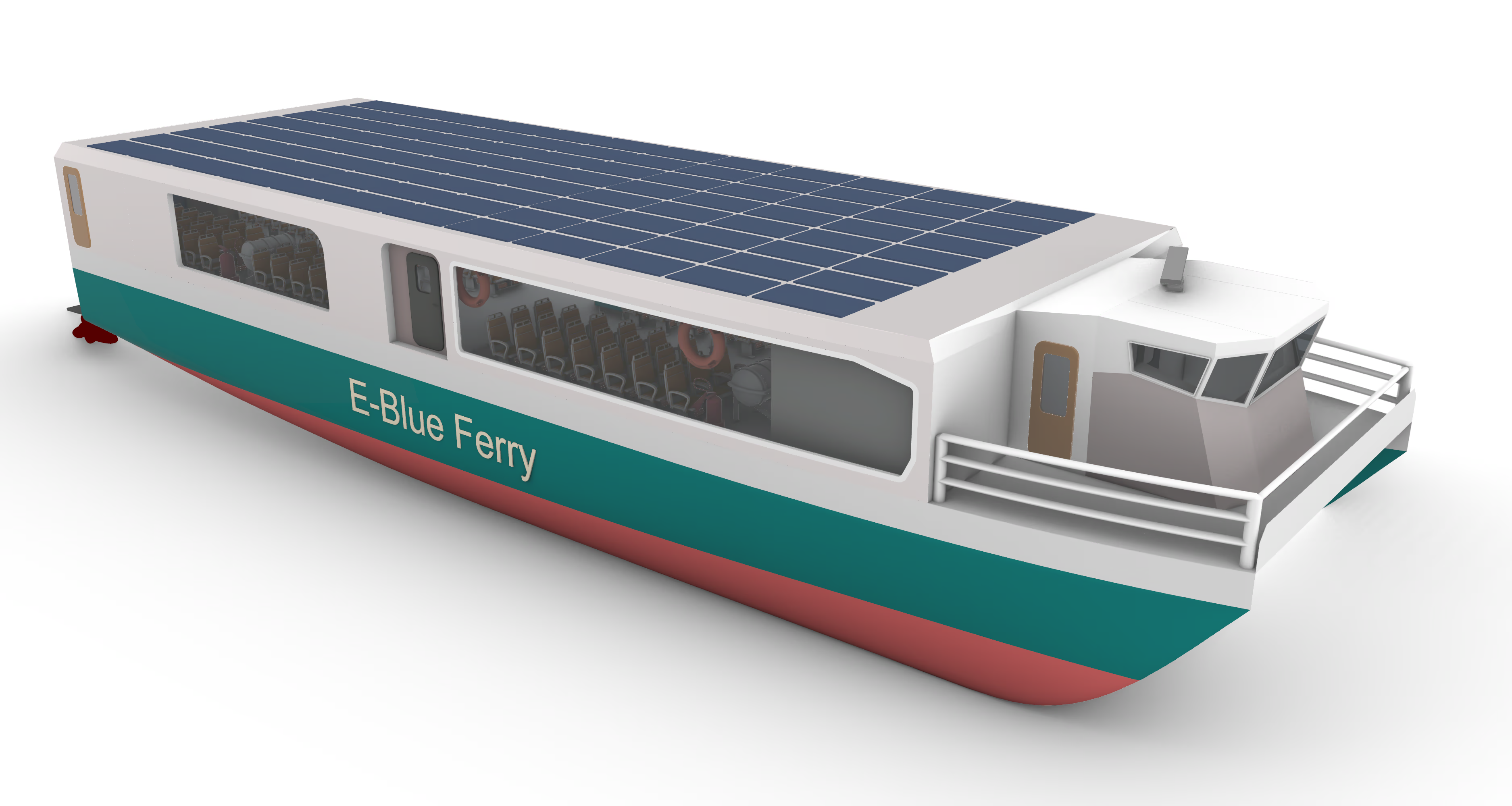
Overview & Award
Designed for the 12th International Student Design Competition organized by the Worldwide Ferry Safety Association.
Award: Significant Achievement
This comprehensive concept design, based on DNV rules, demonstrates an economically viable and buildable pathway from concept toward completion.
Problem Statement: Lagos faces severe congestion across its urban transport network. Water transit offers a scalable, safe, and efficient alternative for daily commuting.
.png)
Route map (Ikorodu ↔ Marina)
Solution: E‑Blue Ferry a safe, affordable, fully‑electric, fully air‑conditioned 200‑passenger catamaran designed for inland waterways operations, built for local manufacturability and lifecycle viability.
Key Specifications
| Parameter | Value | Notes |
|---|---|---|
| Length Overall (LOA) | 32 m | |
| Beam | 8.8 m | |
| Draft | 1.4 m | |
| Displacement | 85 tons | |
| Passenger Capacity | 200 persons | |
| Propulsion | Fully Electric | 2 × 115 kW |
| Battery Capacity | ~750 kWh | LiFePO4 |
| Service Speed | 17 knots | |
| Range | 62 km |
Engineering Excellence
Hull Form Optimization
We selected the Delft 372 catamaran hull as the parent hull, then introduced a 2 m parallel middle body to refine L/B proportions and reduce resistance. Validation used parametric CFD studies; see the resistance vs. speed plot across variants. The 32 m design was chosen for its lowest power demand at 17 knots.
.png)
Hull form
.png)
Hull form
Structural Design
Designed in accordance with DNV rules for Inland Navigation vessels (concept-level calculations performed against applicable criteria). Calculations covered design pressures, hull girder strength (hogging/sagging), and scantlings for bottom, side, and deck structures. A summarized results table (e.g., bottom transverse thickness and section modulus) substantiates rule-basis compliance.
Stability Analysis (Intact & Damage)
Intact and damage stability assessed against DNV requirements for the concept design. It includes the GZ curve (intact) and damage stability plots. The evaluated conditions indicate compliance with the applicable criteria, including wind heel and turning.
.png)
GZ Curve (intact stability)
.png)
Damage stability plot
Propulsion & Power System
Propulsion is based on a 240 V DC system assembled from 70 LiFePO4 cells, inverted to 380 V AC for the motors. A separate LiPo battery supports hotel loads. The general and machinery arrangements define safe serviceability and maintainability.
.png)
Power vs Speed
Economic Feasibility & Break‑Even Analysis
Conclusion: Project break‑even occurs in 4 years.
Cost estimation used SWBS (Ship Work Breakdown Structure) formulas and local industrial rates. The cumulative cash‑flow projection over 18 years clearly indicates the 4‑year break‑even point.
Operational Plan & Innovation
- Route: Ikorodu ↔ Marina (recommended route map).
- Charging: Fast‑charging strategy scheduled at both terminals.
- Features: Cowry Card integration, solar support, safety SOPs, and passenger amenities (Wi‑Fi, USB ports).
Conclusion
The design fulfills core goals: Safety (based on DNV rules), Affordability (4‑year break‑even), and Sustainability (fully electric). It is a practical blueprint for the future of urban water transit.